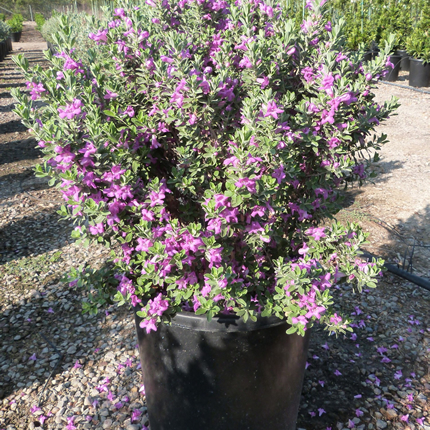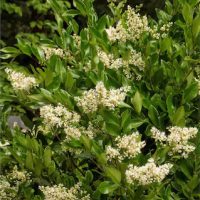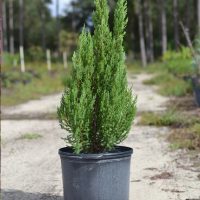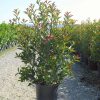Description
Transform your landscape with the rugged beauty of Texas Sage, a versatile shrub perfect for sunny, dry climates. Known for its silvery-gray foliage and stunning purple blooms, Texas Sage offers year-round interest with a pop of color during the summer and fall months. This hardy native plant thrives in well-drained soils and requires minimal maintenance, making it an ideal choice for xeriscaping or low-water landscapes.
Texas sage is a favorite flowering shrub of landscapers and home owners. It is drought tolerant, loves the sun, and requires little maintenance. It is an excellent plant for dusty and dry areas where other plants will not grow. It’s one of the most reliable and fool-proof low water use plants in Texas. Too much care- water, fertilizer, and trimming, can harm the plant.
Texas sage is known as the barometer plant in the southwest because when the humidity rises after a rain storm, the plant bursts into bloom. Texas sage has lavender to purple blossoms that appear off and on all year.
Pruning and shearing is not necessary because Texas sage has a very attractive natural shape.
Texas Sage Key Features
- Drought Tolerant: Perfectly adapted to arid climates, Texas sage thrives in hot, dry conditions with minimal water requirements, making it a sustainable choice for water-wise gardens.
- Striking Appearance: The silvery-grey leaves provide a beautiful contrast to the vivid purple flowers, creating a visually appealing landscape element year-round.
- Easy Maintenance: This low-maintenance shrub requires little care once established, making it an excellent option for busy gardeners or those looking for a hassle-free addition to their landscape.
- Wildlife Attraction: Texas sage flowers attract pollinators such as bees and butterflies, promoting a healthy and vibrant ecosystem.
Planting and Care Tips
- Site Selection: Choose a sunny location with well-drained soil. Texas sage thrives in full sun and can tolerate poor, rocky soils.
- Planting: Plant Texas sage in the spring or fall. Dig a hole slightly larger than the root ball, place the shrub in the hole, backfill with soil, and water thoroughly.
- Watering: Water regularly until the plant is established, then reduce watering. Texas sage is highly drought-tolerant and prefers infrequent, deep watering.






